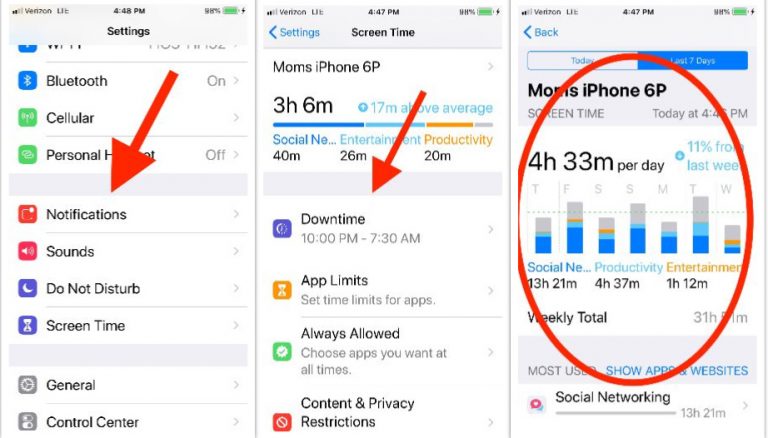It has been a tough year in terms of public relations for the big tech firms. From Congressional hearings, to Russian manipulation of social media platforms to data privacy concerns and breaches you might think we’d all give up on them! But no, they’ve got us hooked. From iPhones to Google to Instagram and Amazon, we all seem to prefer the convenience and connection they provide us over our own privacy and independence. Is it any wonder that many parents are worried about their kids’ ‘addiction’ to technology when we too get caught checking our texts at red lights? Many of the technology companies have answered these concerns with tools for families to help manage our dependence on technology; but once again they place the majority of the responsibility on us, rather than adjusting their business practices.
It has been a tough year in terms of public relations for the big tech firms. From Congressional hearings, to Russian manipulation of social media platforms to data privacy concerns and breaches you might think we’d all give up on them! But no, they’ve got us hooked. From iPhones to Google to Instagram and Amazon, we all seem to prefer the convenience and connection they provide us over our own privacy and independence. Is it any wonder that many parents are worried about their kids’ ‘addiction’ to technology when we too get caught checking our texts at red lights? Many of the technology companies have answered these concerns with tools for families to help manage our dependence on technology; but once again they place the majority of the responsibility on us, rather than adjusting their business practices.
Persuasive Design
The reality is that the big tech firms employ behavioral scientists in their development process in order to manipulate us in to using our tech more frequently and for longer periods of time. This “persuasive design” is elemental to the popular apps, social media platforms, games and devices we use. In a recent Common Sense Media study, 72% of teens surveyed said that they believe the tech companies utilize hidden techniques to keep them hooked on their devices. So, maybe it is not entirely our fault that we are all so attached to our phones?
In response to the alarming and creepy reports that we’re all being exploited and controlled by scary tech scientist, the big companies have offered Digital Health or Digital Wellness tools. These tools are supposed to give us the freedom to determine our own behaviors.
The reality is that the big tech firms employ behavioral scientists in their development process in order to manipulate us in to using our tech more frequently and for longer periods of time. This “persuasive design” is elemental to the popular apps, social media platforms, games and devices we use. In a recent Common Sense Media study, 72% of teens surveyed said that they believe the tech companies utilize hidden techniques to keep them hooked on their devices. So, maybe it is not entirely our fault that we are all so attached to our phones?
In response to the alarming and creepy reports that we’re all being exploited and controlled by scary tech scientist, the big companies have offered Digital Health or Digital Wellness tools. These tools are supposed to give us the freedom to determine our own behaviors.
Do Screen Time Management Tools Work?
I was pretty skeptical at first but found that when faced with the screen time tracking of my phone use that I needed some help. Nothing gets you to change your habits more than realizing you spent 2 hours mindlessly scrolling social media. I am an iPhone and Mac user so I relied on the Apple Families tools. The good news is that these tools are becoming widely available – even
Instagram will help users to disconnect. Following is a list of some of the tools available.
I was pretty skeptical at first but found that when faced with the screen time tracking of my phone use that I needed some help. Nothing gets you to change your habits more than realizing you spent 2 hours mindlessly scrolling social media. I am an iPhone and Mac user so I relied on the Apple Families tools. The good news is that these tools are becoming widely available – even
Instagram will help users to disconnect. Following is a list of some of the tools available.

Apple Families: Apple reorganized and streamlined their parental control and screen time offerings with the release of iOS 12 earlier this year. Now with Family Share you can set Screen Time limits, Do Not Disturb, Bed Time, App Limits, Content and Privacy Restrictions, plus location sharing for you and your whole family all from your device.
Google Family Link: Much like Apple’s tools, Google’s intention is to help families ‘create healthy digital habits.’ Here again, once you have set up accounts for everyone in the family you can set screen time limits, lock the devices remotely, block and approve apps and track your kids whereabouts.
Microsoft’s Family Group: Ditto above – except that these family tools extend to the Xbox as well.
So what about those families that have a mix of Apple, Android, Chromebook and Microsoft products? Some home wireless providers like Comcast and Verizon offer a lot of the same tools described above through the home connection. There are also Wi-Fi controls offered through third parties such as Disney’s Circle and Family Zone so families do have some good options.
Apple Families: Apple reorganized and streamlined their parental control and screen time offerings with the release of iOS 12 earlier this year. Now with Family Share you can set Screen Time limits, Do Not Disturb, Bed Time, App Limits, Content and Privacy Restrictions, plus location sharing for you and your whole family all from your device.
Google Family Link: Much like Apple’s tools, Google’s intention is to help families ‘create healthy digital habits.’ Here again, once you have set up accounts for everyone in the family you can set screen time limits, lock the devices remotely, block and approve apps and track your kids whereabouts.
Microsoft’s Family Group: Ditto above – except that these family tools extend to the Xbox as well.
So what about those families that have a mix of Apple, Android, Chromebook and Microsoft products? Some home wireless providers like Comcast and Verizon offer a lot of the same tools described above through the home connection. There are also Wi-Fi controls offered through third parties such as Disney’s Circle and Family Zone so families do have some good options.
Encourage Good Digital Habits and Self-Control
I have used the screen time controls to track and limit my own use as well. I wanted to get an understanding of how much I am on my phone and computer so that I could set limits for myself and model the digital habits I want my kids to adopt. I did run up against a few time limits when I really wanted to watch another funny video on YouTube, but decided that it was more important for me to accept the limits so I could set expectations for my family. Overall, I am concerned less with total screen time use – as I am on my computer a lot for work, and instead started to track how much I was using my phone or getting on social media without any real need or purpose. So in the end, I did find it useful to help me to confront and adjust my behavior. I also think it is important for parents to recognize that kids are balancing purposeful tech use (homework, exploring, and collaborating) with mindless scrolling and constant connections to friends. It’s important to encourage their positive use of tech and help them limit the junk.
Even with these tools available, I don’t think it is wise to rely on technology to parent for us. Parents need to know and understand what their kids are doing online, with whom they are connecting, what their favorite apps are and set standards for online behavior as well as insisting on time spent offline. In my
Digital Citizenship Workshops with kids, I explain to them that if they want their parents to hand over a device, they too need to take responsibility for understanding how their time is spent online. I don’t suggest this is easy, but I do believe in free will. We need to teach our kids (and ourselves) the need to develop self-control, purposeful connections and behavior modifications – even in the face of tech scientists and persuasive designs.
I have used the screen time controls to track and limit my own use as well. I wanted to get an understanding of how much I am on my phone and computer so that I could set limits for myself and model the digital habits I want my kids to adopt. I did run up against a few time limits when I really wanted to watch another funny video on YouTube, but decided that it was more important for me to accept the limits so I could set expectations for my family. Overall, I am concerned less with total screen time use – as I am on my computer a lot for work, and instead started to track how much I was using my phone or getting on social media without any real need or purpose. So in the end, I did find it useful to help me to confront and adjust my behavior. I also think it is important for parents to recognize that kids are balancing purposeful tech use (homework, exploring, and collaborating) with mindless scrolling and constant connections to friends. It’s important to encourage their positive use of tech and help them limit the junk.
Even with these tools available, I don’t think it is wise to rely on technology to parent for us. Parents need to know and understand what their kids are doing online, with whom they are connecting, what their favorite apps are and set standards for online behavior as well as insisting on time spent offline. In my
Digital Citizenship Workshops with kids, I explain to them that if they want their parents to hand over a device, they too need to take responsibility for understanding how their time is spent online. I don’t suggest this is easy, but I do believe in free will. We need to teach our kids (and ourselves) the need to develop self-control, purposeful connections and behavior modifications – even in the face of tech scientists and persuasive designs.


